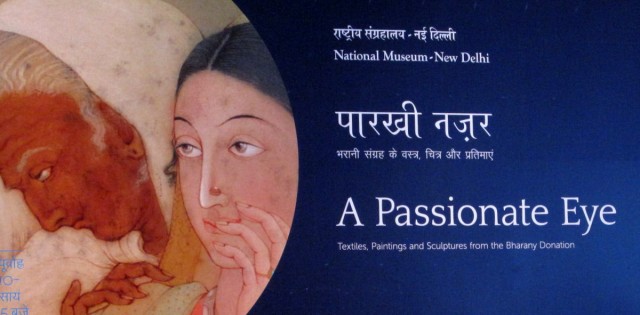Client: Bharany’s, New Delhi
April 2014 – September 2014
 The exhibition ‘A Passionate Eye: Textiles, Paintings and Sculptures from the Bharany Donation’ also titled ‘Parkhi Nazar’ in Hindi was inaugurated on Friday, 11 July 2014 and was on till 10 September 2014.
The exhibition ‘A Passionate Eye: Textiles, Paintings and Sculptures from the Bharany Donation’ also titled ‘Parkhi Nazar’ in Hindi was inaugurated on Friday, 11 July 2014 and was on till 10 September 2014.
The exhibition showcased a selection of items from a major donation made to the National Museum in 1976 by Shri C. L. Bharany, in memory of his father, Shri R. K. Bharany. Supported by some items from the Bharany Private collection, it highlighted the role played by private collectors in enriching the nation’s public museums. It is the first special exhibition at the National Museum to explore this subject.
The Bharany Donation to the National Museum comprised of many hundreds of items across a wide variety of types: sculptures in stone, bronze, terracotta and wood; paintings on paper and cloth; manuscripts, textiles and coins. These objects represent every era from the 1st to the 20th centuries, and every region of India from Kashmir to Kerala, and from Gujarat to Bengal. They are diverse in terms of social context too, ranging from courtly art and elite items to rural and folk art. Indeed Mr. Bharany’s breadth of vision is a notable feature of his collecting: irrespective of where and when works were made, and from whom, his eye alights on anything of beauty.
Through its design, the exhibition sought to reflect this variety and eclectism. Objects were grouped sometimes by material such as textile, and at other times by subject matter, or themes such as asceticism, irrespective of provenance and date, to highlight the varied and layered links that inspire collecting.
Our role
Co-curated by Dr Giles Tillotson, Pramod Kumar KG and Mrinalini Venkateswaran of Eka, the exhibition showcased a selection of items from a major donation made to the National Museum in 1976 by Shri C. L. Bharany, in memory of his father, Shri R. K. Bharany. Highlighting the role played by private collectors in enriching the nation’s public museums, it was the first special exhibition at the National Museum to explore this subject.
